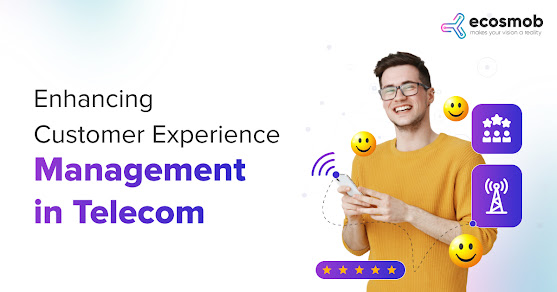In the ever-evolving world of Information technology, businesses are adopting cloud migration as a critical step in the constantly changing field of information technology. Recognizing the importance of strategic partnership with AWS in this arena, our comprehensive guide includes insights into our collaboration with Amazon Web Services (AWS), a leading provider in the cloud computing space. By integrating AWS's cutting-edge technologies and best practices into our guide, we aim to provide a more robust understanding of cloud migration tailored for your business leaders, IT professionals, and anyone keen on comprehending the nuances of cloud computing.
Through this collaboration, we delve deeper into how AWS's scalable and secure services can facilitate a smoother transition to the cloud, ultimately enhancing the impact of cloud migration on the digital world.
Understanding Cloud Migration
At its core, cloud migration refers to the process of moving digital business operations to the cloud. It involves transferring data, applications, and IT processes from an organization's on-premises computers to remote cloud servers, such as AWS (Amazon Web Services). This shift enhances scalability, flexibility, and efficiency. It taps into advanced AWS services like AWS-RDS for relational database management, AWS-DocumentDB for NoSQL database storage, and AWS-S3 for scalable storage solutions, providing a robust business infrastructure.
According to a 2017 Forrester Consulting survey, less than 40% of firms achieve their migration and operating cost targets during a successful cloud migration. Establishing a clear vision and business case with stakeholder alignment is essential to this success in directing the choice of a suitable cloud migration plan.
What is the Significance of Cloud Migration?
The drive towards cloud migration is fueled by the need for your business to adapt to the dynamic demands of the digital age. Services like AWS in cloud migration offer unparalleled benefits, including reduced IT costs, improved performance, and the ability to scale resources on demand. The need for scalability, enhanced user experiences, remote work capabilities, and the global pandemic, accelerated cloud adoption across every industry, has pushed businesses towards cloud adoption. By leveraging the expertise of cloud migration service providers like Ecosmob, companies can navigate the migration process's complexities in a way that aligns with their strategic goals.
Effective Types of Cloud Migration
Cloud migration can take various forms, each suited to different business requirements and objectives:
- Rehosting (Lift-and-Shift): Migrating applications and data to the cloud with minimal changes, often leveraging AWS's vast computing resources for a quick and cost-effective migration.
- Refactoring: Partially modifying applications to exploit cloud-native features and services, such as AWS's elastic computing and managed databases.
- Rearchitecting: Significantly modifying the application's architecture to leverage cloud capabilities fully, often incorporating AWS's serverless architectures for maximum scalability and flexibility.
- Rebuilding: Completely redesign and rebuild applications using cloud-native technologies, tapping into AWS's comprehensive suite of services for advanced features and performance.
- Replacing: Sometimes, the best approach is to replace existing applications with cloud-based SaaS solutions that meet your business needs more efficiently, leveraging AWS's extensive marketplace of SaaS offerings.
How Does the Cloud Migration Process Work?
The cloud migration process is a structured approach involving several key phases:
- Assessment and Planning: Evaluating your current IT infrastructure, identifying suitable applications and workloads for migration, and devising a strategic plan.
- Choosing the Migration Type: Understanding the types of cloud migration, including AWS-specific strategies like leveraging AWS-RDS for databases or AWS-S3 for storage.
- Execution: Moving applications, data, and workloads to the cloud, with careful coordination, to minimize downtime and ensure data integrity.
- Optimization: Post-migration, optimizing the cloud environment to ensure it delivers the desired performance, cost-efficiency, and scalability, possibly involving AWS-specific optimizations.
Choosing the Right Cloud Migration Service Providers
Selecting the right partner is critical and can significantly influence the outcome of your migration project. Providers like Ecosmob stand out with a robust portfolio of services, including hiring AWS migration engineers, from initial assessments and strategy formulation to actual migration, optimization, and ongoing support. They often integrate AWS services to enhance their offerings, ensuring a comprehensive and tailored approach to cloud migration. When evaluating potential providers, consider their industry experience, security and compliance approach, and capacity to offer customized solutions that resonate with your business objectives.
In a Nutshell,
Embarking on a cloud migration is a significant step in any organization's digital transformation journey. With the right strategy, tools, and partners, this journey toward cloud adoption is a strategic decision. It requires careful planning and skilled execution, including the expertise of hired AWS developers and the right partnership. Providers like Ecosmob, with their in-depth understanding of AWS services and ability to provide skilled AWS professionals, stand out as beacons in this domain. It offers tools like AWS Migration Hub, CloudEndure Migration, and AWS Database Migration Service to simplify different migration stages, from initial assessment to the actual move. AWS also offers specialized services like AWS MAP (Migration Acceleration Program) to support your business's transition.
About Ecosmob
Ecosmob Technologies provides the service of hiring expert VoIP developers to design and develop an array of business communication solutions. With the right blend of expertise and decade-long experience, developers can deliver the ultimate business telephony solutions, and MVNO solution development services to enhance productivity and efficiency. Ecosmob provides flexible hiring models to help businesses cater to their requirements according to their needs and budgets.
To know more visit: https://www.ecosmob.com/
Original Source: https://www.ecosmob.com/migrate-to-the-cloud-guide/







